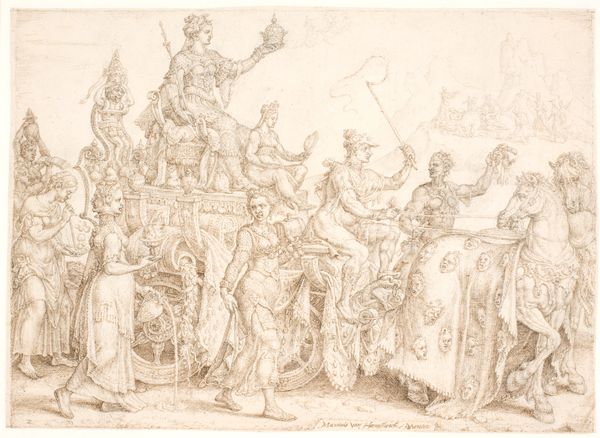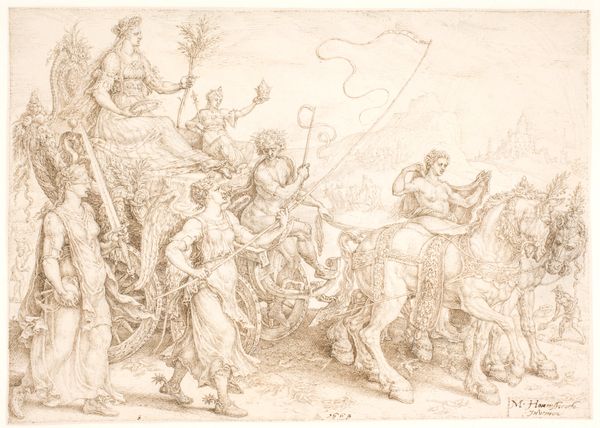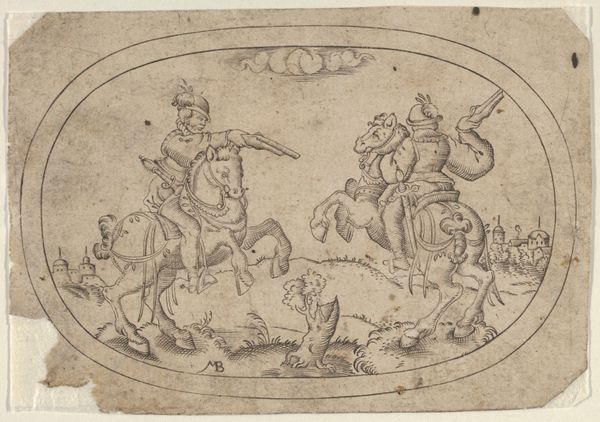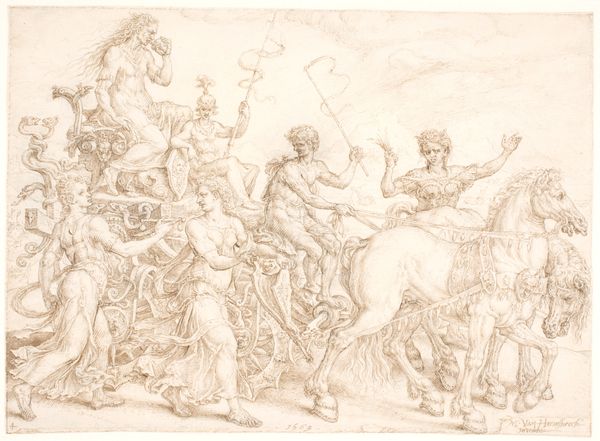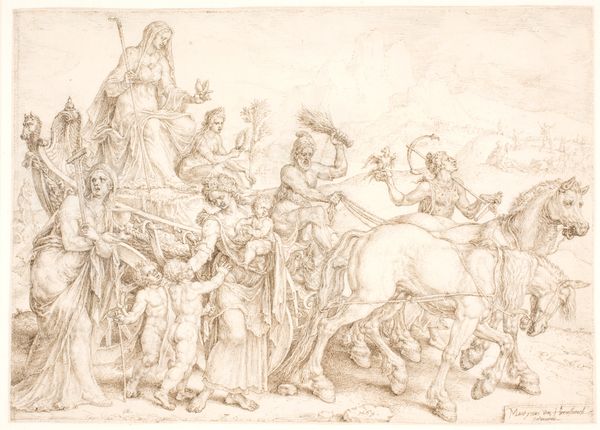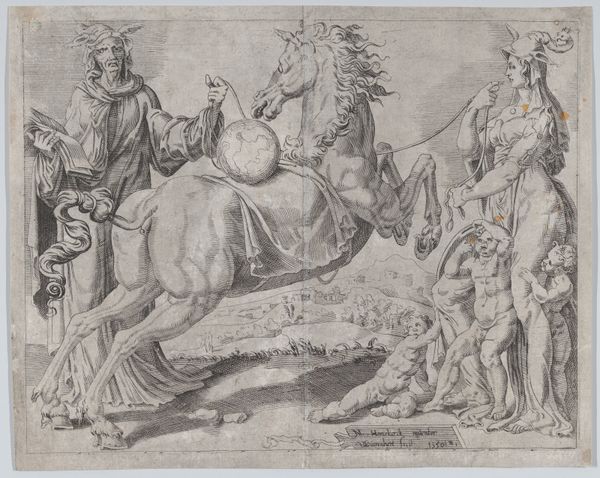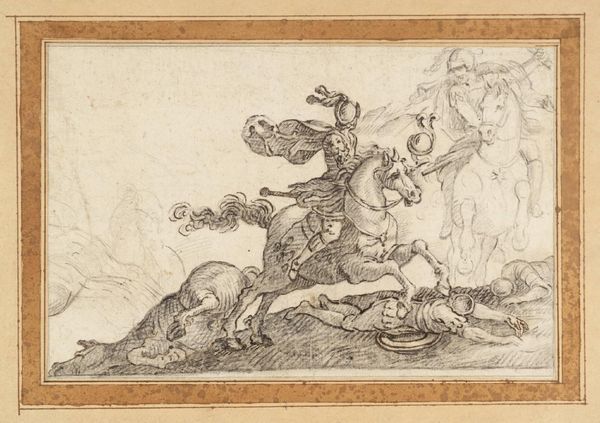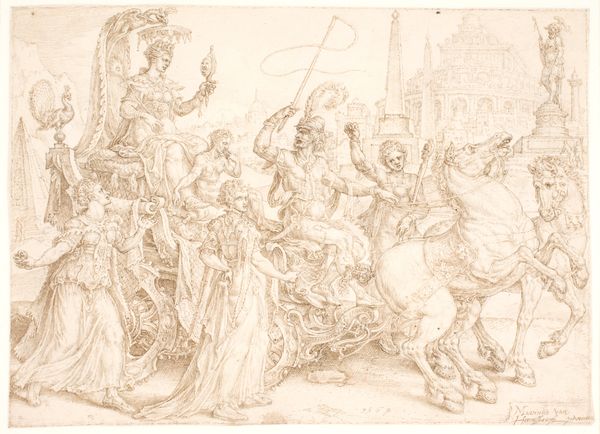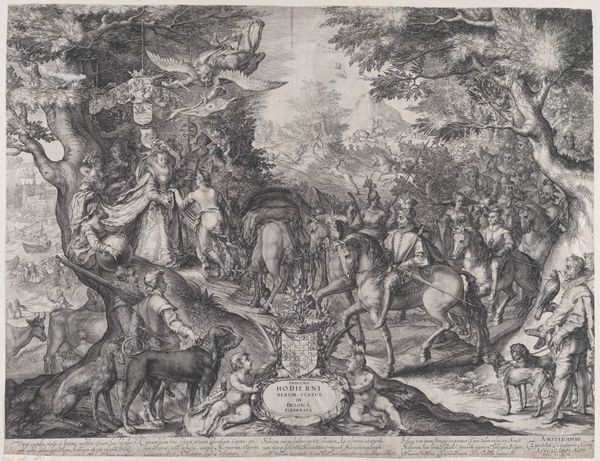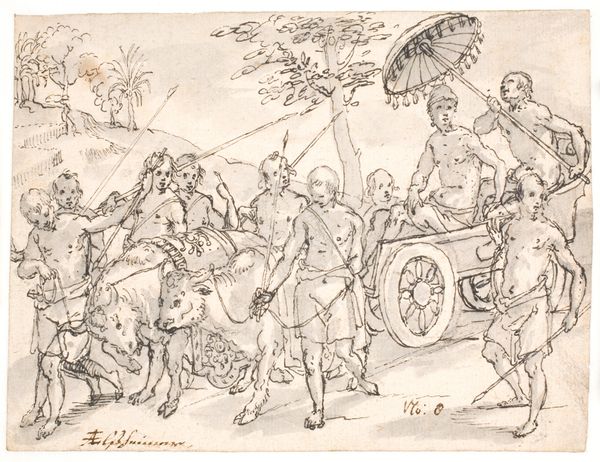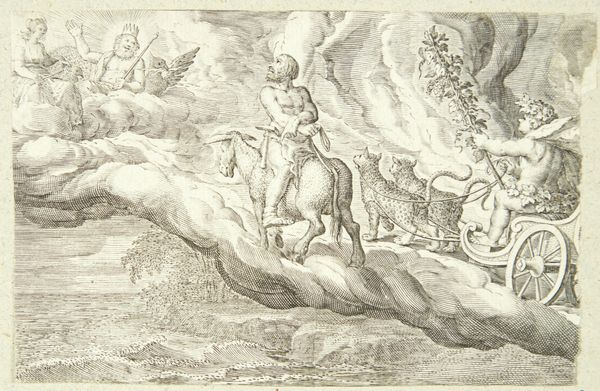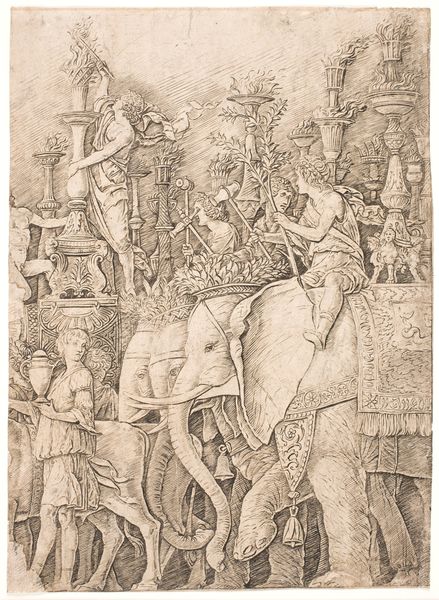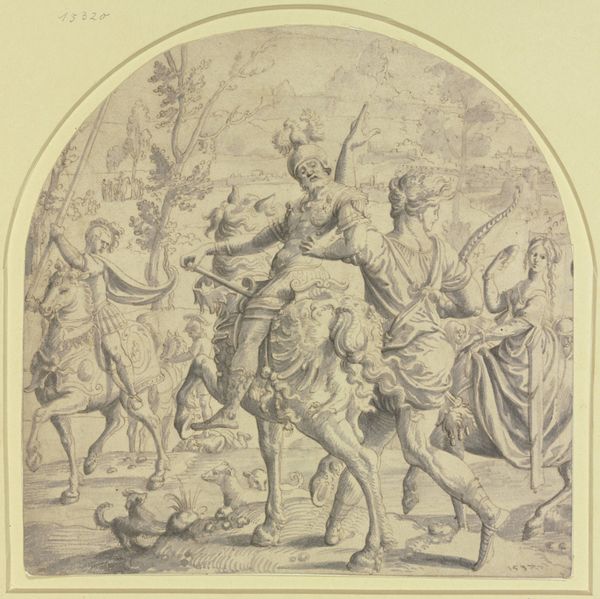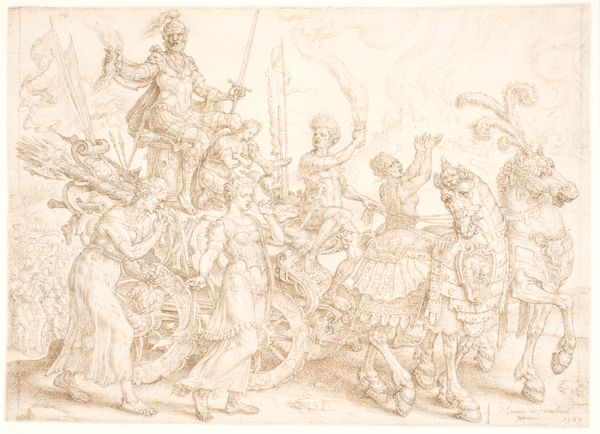
Triumphal Chariot. Mundus (The World). (An allegory of the Four Elements) 1562
0:00
0:00
drawing, paper, ink
#
drawing
#
allegory
#
figuration
#
paper
#
form
#
11_renaissance
#
ink
#
line
#
history-painting
#
northern-renaissance
Dimensions: 195 mm (height) x 267 mm (width) (bladmaal)
Editor: This drawing, "Triumphal Chariot. Mundus (The World). (An allegory of the Four Elements)" by Maarten van Heemskerck, was created in 1562, using ink on paper. The detail is astounding! All these figures crowded together – it feels almost dreamlike and overwhelming. How do you interpret this work? Curator: Well, the key is to remember the period: 16th-century Europe. Allegories like this were very popular, functioning almost like political cartoons. Here, Heemskerck uses the chariot, a traditional symbol of triumph and power, to present his vision of the world or "Mundus." Notice the figures representing the four elements—fire, earth, water, and air. Where do you think this drawing fits within the artistic and social context of the time? Editor: It seems incredibly learned, as if it's trying to convey a complex philosophical point through symbolism. I guess that would appeal to the educated elite? Curator: Precisely. These allegories were often commissioned by wealthy patrons and humanist circles who relished in deciphering hidden meanings and displaying their intellectual prowess. Consider, too, the rise of printing. Prints and drawings like these helped disseminate humanist ideas beyond the confines of the aristocracy. They served a public role in shaping opinions and consolidating knowledge. It makes you wonder who the target audience of this drawing might have been and what its specific message entailed. Editor: I see. So, it wasn't just art for art's sake but almost a form of visual propaganda. Curator: In a sense, yes. Art has rarely existed in a vacuum, detached from social forces. Here, Heemskerck harnesses allegory, classical imagery, and popular printmaking techniques to engage with contemporary political and intellectual discourse. What did you find most striking about this piece? Editor: I guess realizing how relevant even allegorical art could be to contemporary issues, and how much it tells us about the beliefs of people living back then. Curator: Exactly. It underscores the profound connection between artistic expression and the shaping of cultural values and public discourse.
Comments
No comments
Be the first to comment and join the conversation on the ultimate creative platform.
